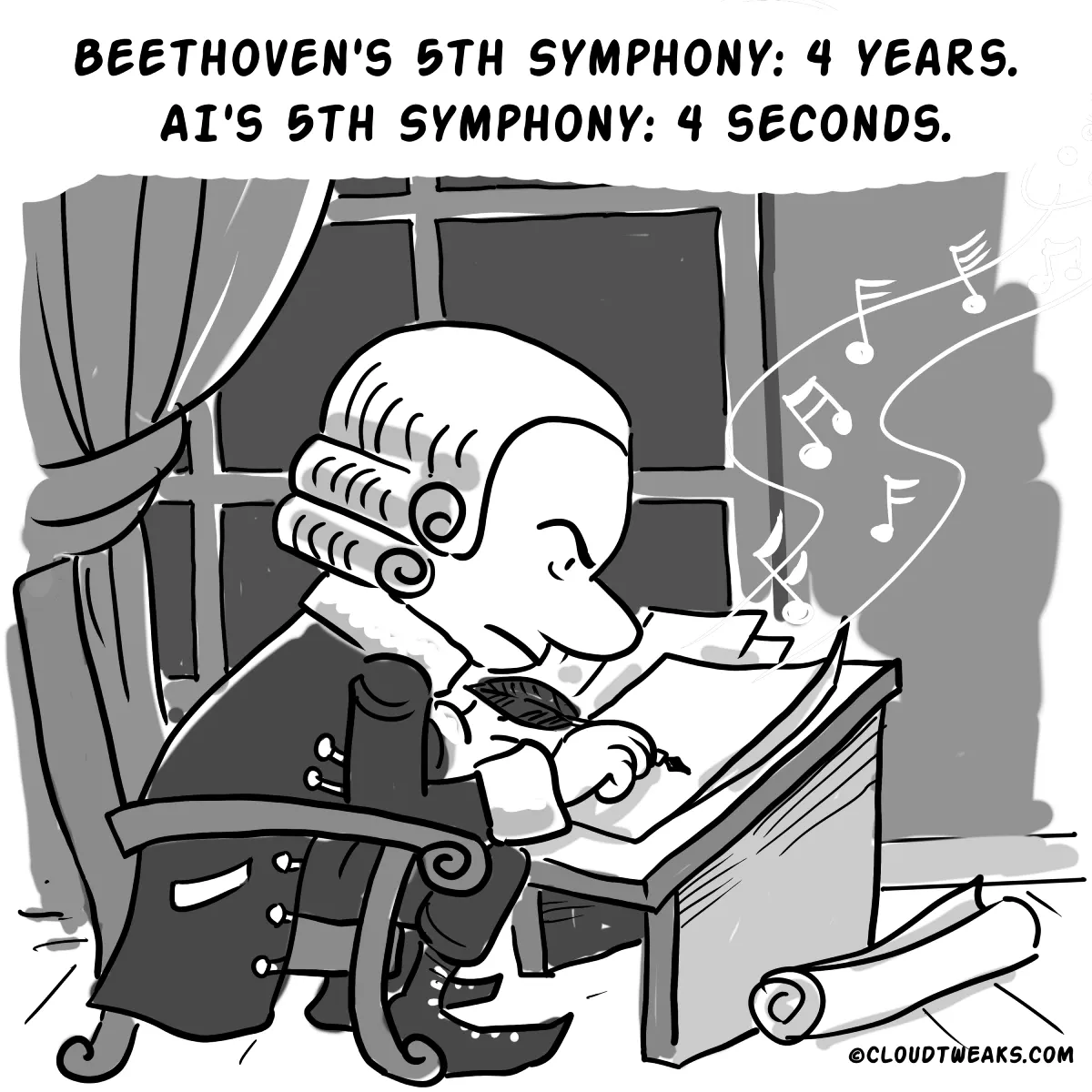Are you confused about what you should do with generative AI?
Well, the news from the first developer conference organized by OpenAI, the maker of ChatGPT, could take that to the next level.
The biggest announcement? You can make your own GPT. That’s right. Want your own personal version of ChatGPT to do something for you? Well, the tech now exists.
Watch CMI’s chief strategy advisor Robert Rose explain, or keep reading his thoughts:
Almost one year ago, OpenAI publicly launched ChatGPT. You could ask questions, ask a follow-up to the answer provided, and ask it to create content by simply chatting with the interface.
Those early days brought the first use cases (subscription required) and warnings it would replace customer service chatbots and Google’s search engine. Two weeks after the announcement, people discovered ChatGPT could write original content. Being only human, of course, people immediately went to the ridiculous. They asked it to explain how to make a peanut butter sandwich in the style of the King James version of the Bible or to explain how AI works as an annoying guy who can’t stop going on tangents.
A few weeks later, people got a bit more serious (subscription required) and realized ChatGPT could write code, essays, or news stories even though the learning model’s knowledge only went through 2021. Toward the year’s end, people worried students would use it to chat, reporters would become obsolete, and coding would be a dying skill.
But by early 2023 – months after the initial announcement – marketing teams played with it. At companies of all sizes, they let out a huge, collective sigh. ChatGPT could produce decent short-form content. You saw all kinds of startups emerge that would magically write your ad copy and blog posts, adjust your SEO, create your persona research, write your landing pages, develop your FAQs, and more. ChatGPT could do everything. Content people worried their jobs would disappear. Everybody wondered what would happen next.
Almost a year later, OpenAI says ChatGPT has 100 million weekly users, and what’s next has arrived: You can build your own GPT to fit how you want to use it.
In a custom GPT demo, OpenAI used customized learning material to provide a “creative writing coach.” In another example, it used a limited set of focused learning materials to help attendees navigate the developer conference.
As a side note, Robert has developed a GPT called Content Marketing Companion. It uses his four books and classes on content marketing for the learning model. He can ask it basic questions on content marketing strategy. The results? Pretty good but not mind-blowing (yet).
“The real value seems to lie in giving your custom GPT the ability to act, such as browsing a website, sending an email, or letting it access other tools such as Zapier or Canva to perform these tasks,” Robert says.
Embrace the long, innovative vision of GPT
Consumers are still reeling with the practical use cases for ChatGPT, and so you want to go to things you recognize. As you realize, most of the use cases are simplistic, like Robert’s Content Marketing Companion.
Think about your content library – blog content, customer help documentation, social media posts, etc. By giving a custom GPT access to that knowledge, you could create your brand’s own content marketing companion.
In the long run, you can’t differentiate yourself with such simple uses because anyone can make them. Someone else could easily re-create Content Marketing Companion with their own or even Robert’s content. Use cases and instructions already exist on how to build custom GPTs for SEO and marketing.
“Truly innovative outcomes of a custom GPT don’t yet exist because people haven’t even begun to envision them,” Robert says. OpenAI believes this, too, as it also announced plans for what is ostensibly an app store for custom GPTs.
What should you and your marketing team do?
Well, the thousands of original research projects into how marketing teams use generative AI make one thing clear: Marketers are still just playing around with it at the end of 2023.
“As my own research notes, though, it’s people, not teams, doing the experimenting,” Robert says. “With few exceptions, marketers are not looking at how to integrate AI into your team’s workflow and systems yet. You’re trying to figure out how it works for individuals to make their jobs easier.”
But that’s what people have always done with every new technology, including the original ChatGPT almost one year ago.
See GPT as a content strategy challenge
For businesses, generative AI – custom or off the shelf – is a content strategy challenge, not a technology challenge. Play. Experiment. Try out custom GPTs. But do it in the context of how it makes your business better, and let that imagination be free.
Leave the development of the custom GPT that will speak Klingon language to the nerds who nerd out on such things. (By the way, I developed that custom GPT, calling it Klingon Language Tutor.)
In any event, challenge your marketing team to stop interpreting these new developments from the lens of how the advancements can make their jobs better or easier. “You need to put on the lens of what opportunities you have to make your business better,” Robert says. “To do that, you must have standards, guidelines, and the people processes and technologies that already make your business good.
“If you can’t answer what makes your content and marketing strategy good, no customized GPT is going to make it any better.”
That’s it. Until then, Robert says, “Qapla’ batlh je.” (For the non-Klingon readers, that translates to “success and honor to you.”)
Please note: All tools mentioned in this article were suggested by the article’s author. If you’d like to suggest a tool, share the article on social media with a comment.
HANDPICKED RELATED CONTENT:
Cover image by Joseph Kalinowski/Content Marketing Institute























